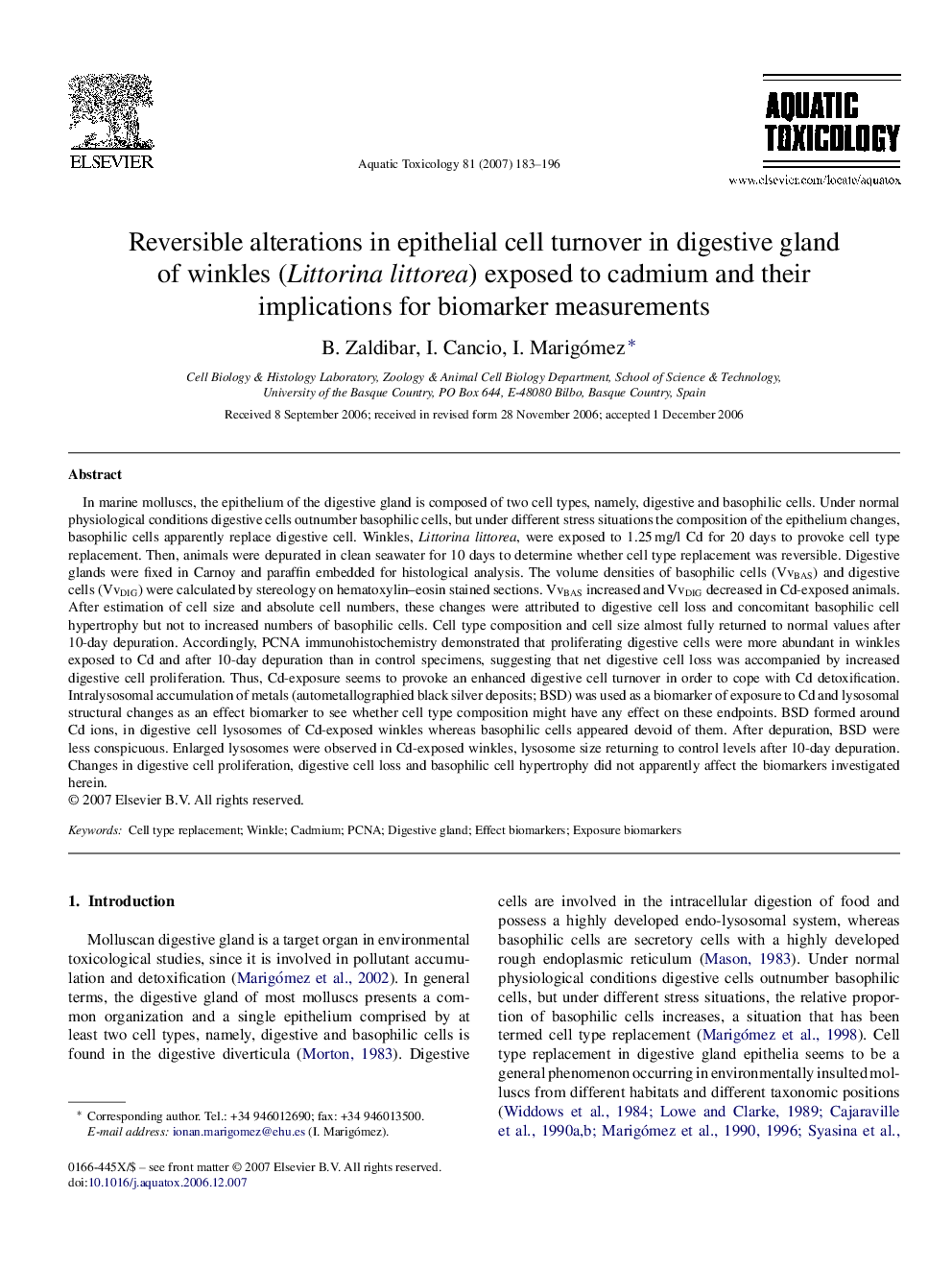| کد مقاله | کد نشریه | سال انتشار | مقاله انگلیسی | نسخه تمام متن |
|---|---|---|---|---|
| 4531210 | 1324761 | 2007 | 14 صفحه PDF | دانلود رایگان |

In marine molluscs, the epithelium of the digestive gland is composed of two cell types, namely, digestive and basophilic cells. Under normal physiological conditions digestive cells outnumber basophilic cells, but under different stress situations the composition of the epithelium changes, basophilic cells apparently replace digestive cell. Winkles, Littorina littorea, were exposed to 1.25 mg/l Cd for 20 days to provoke cell type replacement. Then, animals were depurated in clean seawater for 10 days to determine whether cell type replacement was reversible. Digestive glands were fixed in Carnoy and paraffin embedded for histological analysis. The volume densities of basophilic cells (VvBAS) and digestive cells (VvDIG) were calculated by stereology on hematoxylin–eosin stained sections. VvBAS increased and VvDIG decreased in Cd-exposed animals. After estimation of cell size and absolute cell numbers, these changes were attributed to digestive cell loss and concomitant basophilic cell hypertrophy but not to increased numbers of basophilic cells. Cell type composition and cell size almost fully returned to normal values after 10-day depuration. Accordingly, PCNA immunohistochemistry demonstrated that proliferating digestive cells were more abundant in winkles exposed to Cd and after 10-day depuration than in control specimens, suggesting that net digestive cell loss was accompanied by increased digestive cell proliferation. Thus, Cd-exposure seems to provoke an enhanced digestive cell turnover in order to cope with Cd detoxification. Intralysosomal accumulation of metals (autometallographied black silver deposits; BSD) was used as a biomarker of exposure to Cd and lysosomal structural changes as an effect biomarker to see whether cell type composition might have any effect on these endpoints. BSD formed around Cd ions, in digestive cell lysosomes of Cd-exposed winkles whereas basophilic cells appeared devoid of them. After depuration, BSD were less conspicuous. Enlarged lysosomes were observed in Cd-exposed winkles, lysosome size returning to control levels after 10-day depuration. Changes in digestive cell proliferation, digestive cell loss and basophilic cell hypertrophy did not apparently affect the biomarkers investigated herein.
Journal: Aquatic Toxicology - Volume 81, Issue 2, 28 February 2007, Pages 183–196